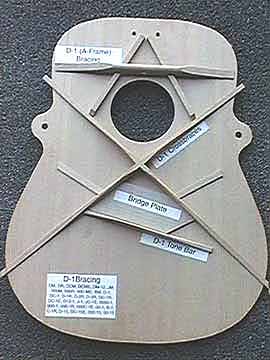An OLFer in another post reminded me of a Frets.com article I hadn't seen in a while. This Martin DM/D-1 bracing caught my eye as an odd animal.
Here's what Frank had to say:
"Notice that there are fewer braces and the cross braces are tapered quite thin at the ends for good flexibility at the edges of the top. This lightweight bracing pattern gives the 1-series a terrific bass response, but because there are no diagonal braces, slightly less complexity of tone, especially in the treble range."
So, just in the interest of education, what about having "no diagonal braces" would lend itself to "less complexity of tone"?
